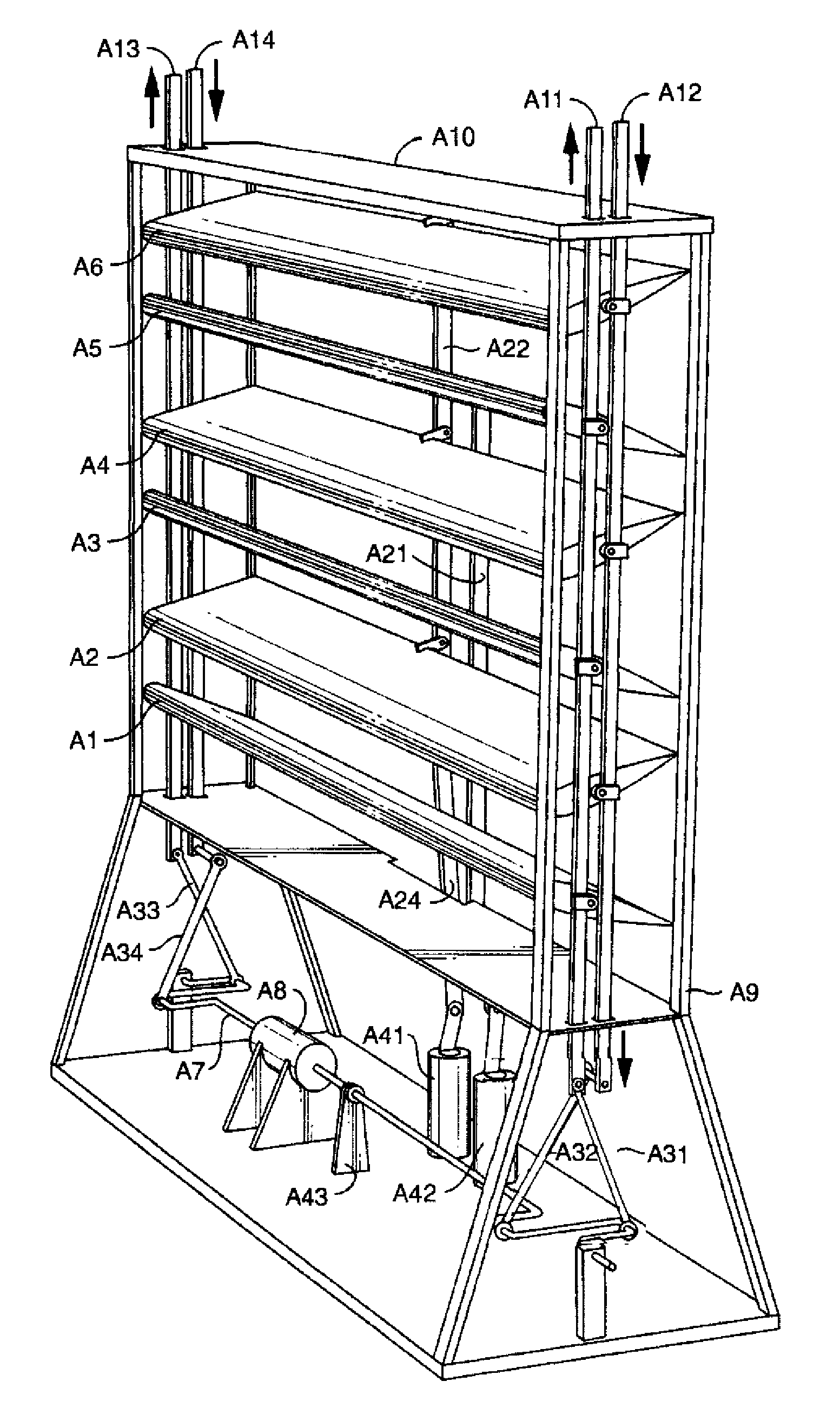Reciprocating wind-powered transducer employing interleaved airfoil arrays
a wind-powered transducer and interleaved technology, applied in the direction of electric generator control, machines/engines, mechanical equipment, etc., can solve the problems of unattractive industrial heat exchanger facilities and exhaust fans, unsuitable, and blocked airflow
- Summary
- Abstract
- Description
- Claims
- Application Information
AI Technical Summary
Benefits of technology
Problems solved by technology
Method used
Image
Examples
Embodiment Construction
[0083]Referring first to FIG. 1, a first embodiment of the transducer, in the form of a wind-powered array, is shown.
[0084]The array includes an odd numbered set of blades (A1, A3, A5) comprise the odd sub-array, and an even numbered set of blades (A2,A4,A6) comprise the even sub-array. The blades in this embodiment are in the form of airfoils.
[0085]Blades A1,A3,A5 are pivotably coupled at their ends to thrust rods A11, A13 by means of spars A52, FIG. 2, and pivotably coupled at their trailing edges to tilt rod A21. Similarly blades A2,A4,A6 are coupled at their ends to rods A12, A14, and coupled at their trailing edges to tilt rod A22.
[0086]In analogy with two-stroke in-line internal combustion engines, thrust rods A11, A13 are pivotably coupled to connecting rods A31, A33 with “wrist” bearings at one end of each, the other ends pivotably coupled to opposing crank pins on the flat crankshaft A7. Correspondingly the even numbered blades (A2, A4, A6), comprising the even blade sub-ar...
PUM
 Login to View More
Login to View More Abstract
Description
Claims
Application Information
 Login to View More
Login to View More - R&D
- Intellectual Property
- Life Sciences
- Materials
- Tech Scout
- Unparalleled Data Quality
- Higher Quality Content
- 60% Fewer Hallucinations
Browse by: Latest US Patents, China's latest patents, Technical Efficacy Thesaurus, Application Domain, Technology Topic, Popular Technical Reports.
© 2025 PatSnap. All rights reserved.Legal|Privacy policy|Modern Slavery Act Transparency Statement|Sitemap|About US| Contact US: help@patsnap.com



